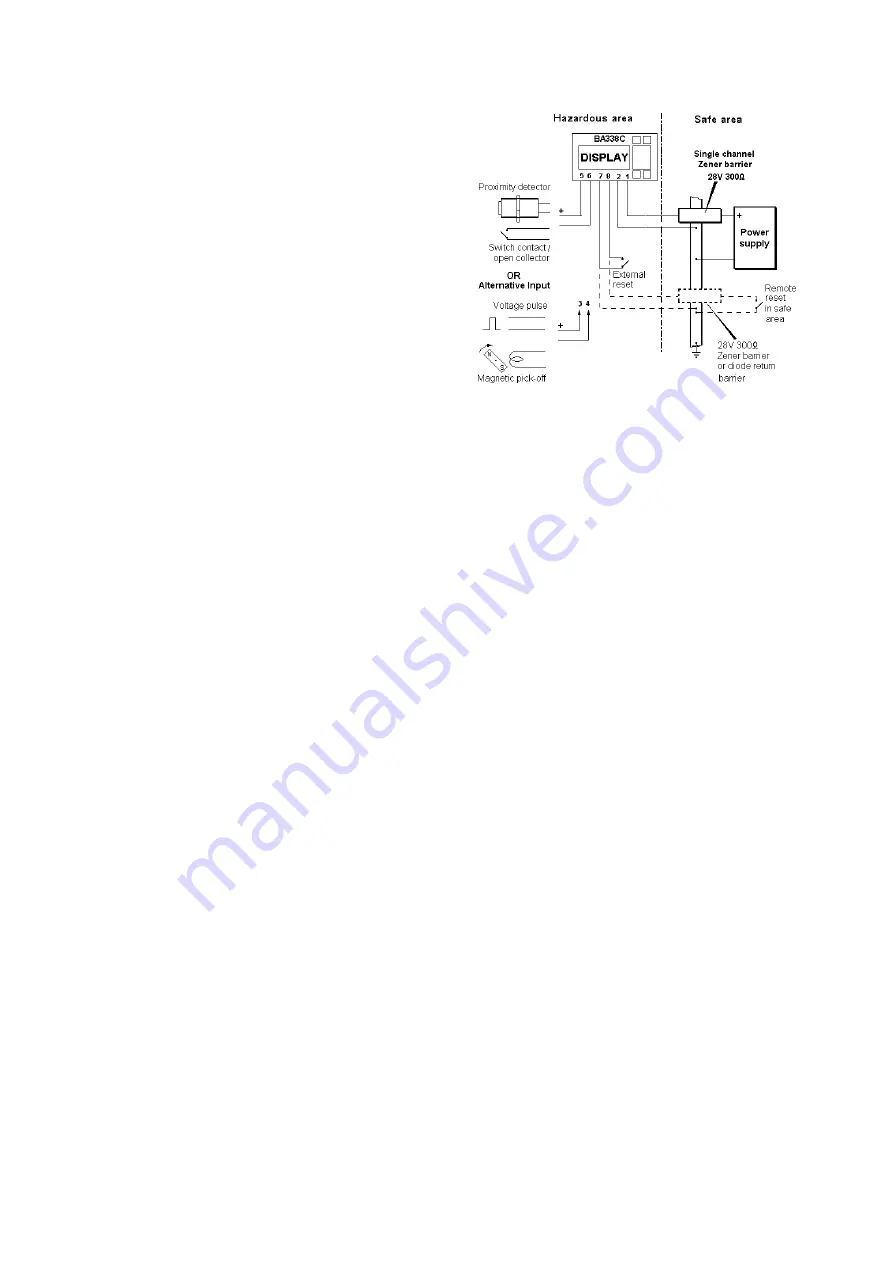
7
4. SYSTEM DESIGN FOR HAZARDOUS AREA
4.1 System certificates
In addition to the ATEX EC-Type Examination
Certificate, ITS have issued two system
certificates. One defines how the BA338C may be
used with Zener barriers and the other with
galvanic isolators. Both are divided into two
sections to cover input signal sources in the
hazardous and in the safe area.
Interface Certificate No
Zener barriers
Ex01E2005
Galvanic isolators
Ex01E2006
This section interprets these system certificates
and illustrates how to design systems with Zener
barriers and galvanic isolators.
System certificates are Certificates of Conformity
which are primarily issued for guidance in the UK.
They do not form part of certification to the
European ATEX Directive.
4.2 Use with Zener barriers
Zener barriers are the least expensive intrinsically
safe interface between a safe and hazardous area.
However they do not provide isolation and require
a high integrity earth connection that may be
expensive to install. For a single BA338C it may
be less expensive and complicated to use galvanic
isolators when a high integrity earth connection is
not already available.
Any certified Zener barriers may be used with the
BA338C providing their output parameters do not
exceed the input parameters of the terminals to
which they are connected. Only one polarity of
Zener barrier i.e. positive or negative , may be
used with an instrument.
To assist with system design, the Zener barrier
system certificate specifies the maximum cable
parameters for popular barriers and lists some of
the diode return barriers that may be used.
Fig 2 illustrates the basic circuit that is used for all
BA338C installations protected by Zener barriers.
For simplicity, connections for the optional pulse
output, 4/20mA output and backlight are included
in the appendix to this manual.
Fig 2 BA338C used with Zener barriers
Alternatively the pulse source may be located in
the safe area. Fig 3 shows how an additional
Zener barrier is used to transfer the signal to the
rate totaliser in the hazardous area. When more
than one Zener barrier is used in a system all must
have the same polarity. i.e. all positive or all
negative barriers.
When designing a system it is important to
remember that terminals 2, 4, 6 and 8 are
interconnected within the BA338C - see Fig 1.
4.2.1 Power supply
Usually a BA338C rate totaliser is powered from
the safe area via a positive polarity 28V 300
Ω
Zener barrier, which has an end-to-end resistance
of about 340
Ω
. When used with a proximity
detector input the BA338C consumes
approximately 25mA and requires a minimum
voltage of 10V between terminals 1 and 2. The
supply voltage in the safe area must therefore be
between 18.5V and the maximum working voltage
of the Zener barrier – usually about 26V.
4.2.2 Pulse input
As shown in Fig 2 the BA338C will count pulses
from a wide variety of sources in the hazardous
area, or from the safe area as shown in Fig 3.
Terminals 5 and 6 are for pulse sources that need
powering e.g. a switch contact, an open collector
or a 2-wire NAMUR proximity detector.
Terminals 3 and 4 are for voltage pulse inputs.
Note:
Only one input may be used at a time. i.e
pulses can not be counted at terminals 3 & 4 and
at 5 & 6 at the same time.
No Zener barrier is required in series with the input
if the intrinsically safe pulse source is located
within the hazardous area.
The following table shows the switching thresholds
for the various transducers, plus the maximum








































